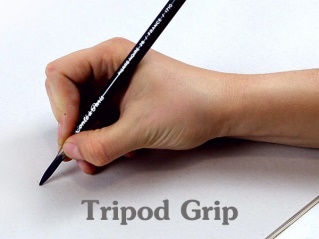Handwriting
Handwriting at Woodside Primary Academy
Intent
At Woodside Primary Academy, the importance of children being able to write legibly, fluently and at a reasonable speed is recognised. With these skills, children have a much greater chance of being able to reach and demonstrate their true potential throughout their school careers and in their lives beyond school.
Implementation
To ensure a consistent approach, the school follows the Nelson handwriting scheme - a whole-school programme designed to help all children develop a confident, legible and personal handwriting style and meet higher curriculum expectations. The programme includes resources for pattern practice and motor skills work as well as fun activities to bring handwriting to life. Children are explicitly taught the skill of handwriting up to three times each week. Across the school, handwriting is carefully modelled by the teacher and outcomes are recorded by the children in the back of their SPaG exercise book .Children in EYFS use activity sheets from Nelson workbooks. The use of patterns to support letter formation and appropriate letter-joins is also embedded enabling children to also further develop their fine motor skills. High expectations are also communicated as part the success criteria for the lesson. A high standard of presentation is also encouraged and expected in children’s written work across the wider curriculum.
Teaching and Learning
We believe that handwriting is a developmental process with its own distinctive stages of progression from readiness for handwriting, through to letter joins, practising speed and fluency and higher presentation skills. A flexible, fluent and legible handwriting style empowers pupils to write with confidence and creativity. In order to achieve this, pupils will be taught:
- To develop fine motor control
- The importance of correct posture and paper position
- To use a pen/pencil and to hold it effectively
- To write from left to right and top to bottom on a page
- To start and finish letters correctly
- To form letters of consistent size and shape
- To use the language of writing and how to use the correct terminology, (e.g. ascenders)
- To put regular spaces between words
- How to form upper and lower case letters
- How to join correctly
- To use different styles of writing for different purposes
- The importance of neat and clear presentation in order to communicate effectively
Pencil grip
• Children should write with a pencil (or pen when children have earned a pen licence) with a rounded nib. Pencils should be reasonably sharp.
• A tripod grip is the most efficient way of holding a pencil 
For right handers
• Hold lightly between the thumb and forefinger about 3cm away from the point
• The paper should be placed to the right tilted slightly to the left
• Use the left hand to steady the paper
For left handers
• Hold lightly between thumb and forefinger resting on the first knuckle of the middle finger
• Hold about 3cm from the tip
• The hand should be kept below the writing line
• The paper should be tilted slightly to the right at about 20 - 30°
• Use the right hand to steady the paper
Across the school, handwriting is carefully modelled by the teacher and good handwriting and excellent presentation are expected in children’s book at all times and in children’s work across the wider curriculum. When writing is neat enough, pupils are awarded a pen licence and will be allowed to use pen in their books (except maths, where they continue to use pencil).
Teachers follow the Nelson handwriting scheme for their year group – children who are not working at the expecting level, use activities from previous years suited to their needs and ability
Impact
This systematic approach of both schemes ensures development in the skill of handwriting throughout each year group. Children take pride in their written work and achieve proficiency in their own use of the Nelson handwriting script. Outcomes in children’s wider curriculum work, as well as in their literacy books and school displays, evidence the progress that children make in this area, as well as the consistency of the approach across the school.
Assessment, Monitoring and Moderation
Children in the EYFS are assessed on an ongoing basis through observation; handwriting informs part of this. With Key Stage 1 and 2, handwriting is assessed as part of children’s writing assessments.
Equal Opportunities
All children have equal opportunities to reach their full potential in handwriting, regardless of their race, gender, cultural background, and ability, or of any physical or sensory disability.
Inclusion
Children with English as an additional language. Children with EAL are encouraged to make the same outstanding progress in handwriting as their peers. To support their understanding of letter formation handwriting should be consistently modelled by the class teacher.
Children with Special Educational Needs
Some children experience difficulties making good progress in their handwriting development. They may need additional support with their fine motor development, pencil grip or letter formation. The class teacher should liaise with the Literacy subject leader and SENDCo to put into place the most appropriate form of support. This could include:
∙ Pencil grip or jumbo triangular pencil
∙ Fine motor skills intervention
∙ Additional handwriting group
∙ Additional handwriting homework
Writing Areas
In each classroom throughout the school, there is a designated writing area where children can consolidate their writing skills outside the Literacy lesson – a variety of writing activities and writing equipment is organised so children can practise and apply their writing skills.
Role of the Subject Leader
The role of the subject leader is to coordinate the teaching of handwriting across all phases of the school. This is in order to secure a consistent approach across the school and to ensure progression in handwriting is outstanding. Some key duties that the literacy subject leader should undertake over the course of the year include:
∙ Monitoring of handwriting in handwriting books and Literacy books
∙ Monitoring of the application of handwriting across other exercise books, such as topic books
∙ Helping identify and facilitate the professional development needs of staff
∙ Liaising with the school SENDCo to best support children with handwriting difficulties
∙ Organising, maintaining and cataloguing handwriting resources
∙ Keeping abreast of new initiatives in the teaching of handwriting
Home
At Woodside, we recognise how important the home – school link is for children to make outstanding progress in all areas of learning – including handwriting. Parents/ carers will be encouraged to support their child with any additional handwriting practice where necessary.

